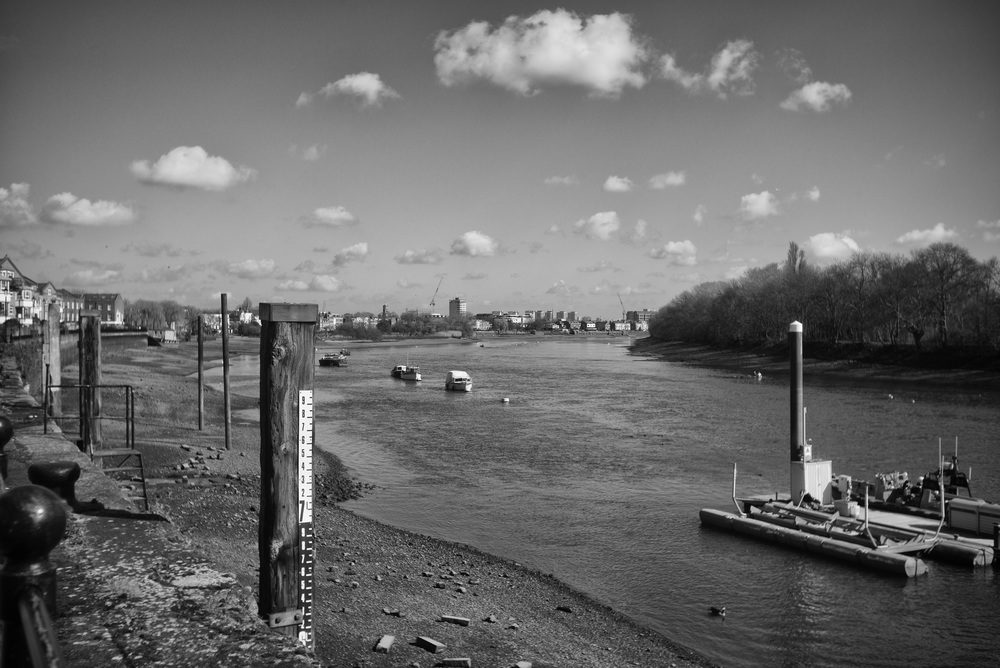
Earlier this week I took a whimsical Thames-side tour with Granny Elmar and Young Fuji. The 1935 3.5cm f/3.5 nickel Leitz Elmar lens achieved remarkably good results and proved more sharp than expected, although relatively soft in comparison with the modern Fujinon 35mm f/2¹.
Yesterday I took the Elmar out again, in dull and uninspiring conditions, this time attached to the Leica M-P. Today, thanks to the sunshine, I was prompted to have another go and was rewarded with brighter shots that do both lens and camera justice. Both outings were good opportunities to see how the old lens performs on a full-frame sensor. On the face of it this is a better match for the full-frame lens.
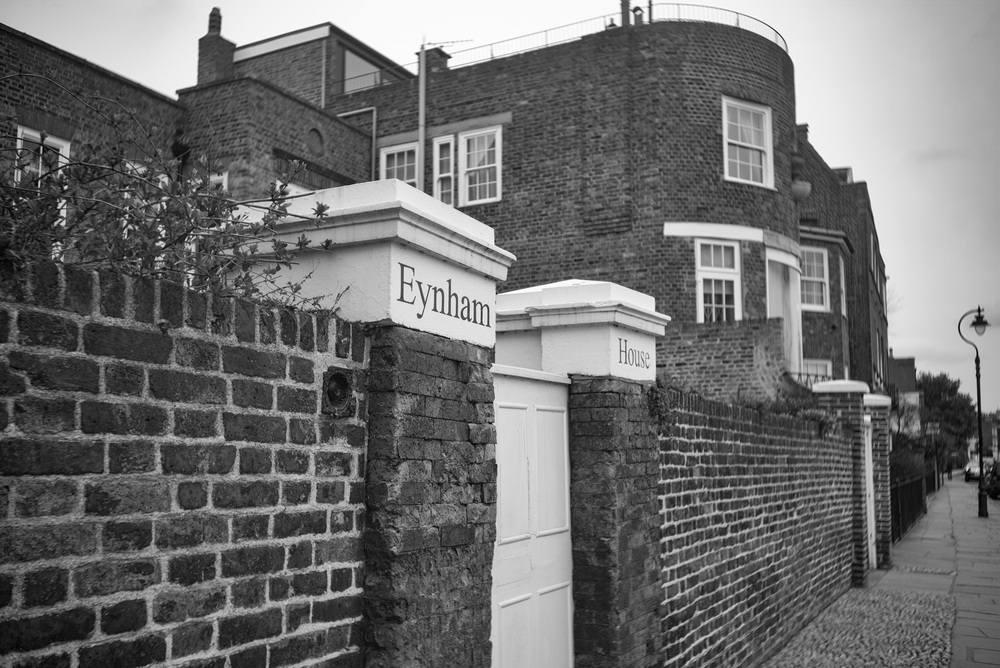
Focus check
Before setting forth I did a quick focus check, using both the VF-2 electronic viewfinder and the M’s range finder, to make sure that the rangefinder focus was accurate. With older lenses it is sometimes the case that the lens and camera are not perfectly in tune. In this case the focus was spot on, so I had no qualms using just the rangefinder for the rest of the afternoon.
The immediate impression is one of wideness of view. On the M, the 3.5 Elmar does what it says on the nickel—it gives a wide-angle view just like any full-frame 35mm prime. To get the same panorama on the Fuji you would have to fit the rather hefty 23mm.
Second thing I noticed, although it is by no means surprising, is the degree of vignetting that occurs at wider apertures and is still noticeable even at f/5.6 and f/6.5. The Fuji, because of the crop sensor, does a good job of hiding this.
Above: An interesting comparison between the Elmar on the Leica M (top row) and the Elmar on the Fuji (bottom row). In each case the full frame is to the left, followed by a large crop to show the buildings in the centre far distance, then a further crop to bring up the detail. It should be noted that the top row shows the lens at its natural 35mm focal length while the bottom row shows the 50mm view when mounted on the Fuji. The pictures were taken on different days, different lighting conditions (the M shots on a lovely sunny day with no haze) but both are from RAW with similar (minimal) processing. The detail, particularly from the top example on the M, is remarkable for such an extreme magnification and such an ancient lens. Note that both shots were taken with the camera hand held. (Note: Click on individual photographs in order to see the full frame enlarged)
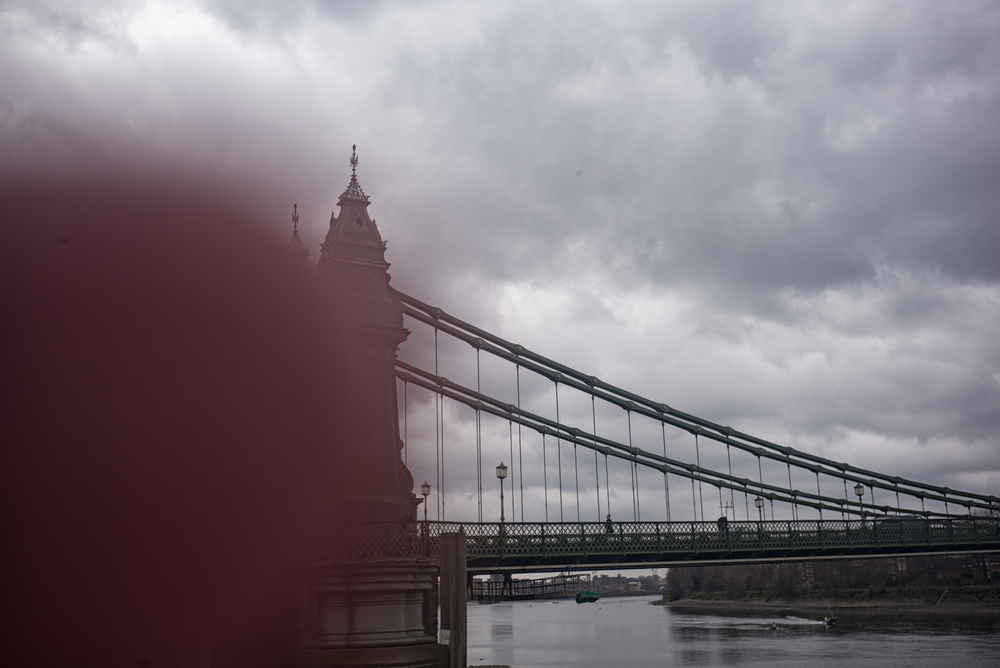
Vignette or fingrette
I would take issue with purists who think that vignetting always is a bad thing. I quite like it on occasion and, while I would prefer to add the effect in post processing, I take this as part and parcel of using a grand old lady such as Frau Elmar.
What I cannot excuse, though, is the fingretting. This is an unusual phenomenon I have not previously noticed on any lens and it certainly wasn’t evident when the Elmar was mounted on the Fuji X-Pro2. No, this happens somehow because of the way the camera is held and the way in which my finger (I suspect the left index finger) strays across the tiny front element of the Elmar in a wayward fashion. This lens is just so small and compact that one’s fingers are everywhere. In the case of the X-Pro2, the added depth of the X-M adapter probably ameliorates the issue.
This is a minor point and mentioned mainly in jest. I think I did mention the principle of workmen and tools quite recently. Practice will undoubtedly make perfect. But it’s something to look out for if you mount one of these old lenses on your M and are using the rangefinder and not the EVF (when said finger is clearly in view and can be snatched away).
There is a third significant difference in using the Elmar on an M as opposed to the Fuji (or, for that matter, on any non-M camera, including the Leica T and the Sony A7). It is noticeable only when using the VF-2 electronic viewfinder on the M.
Above: Full frame and cropped detail
Auto magnification
The surprise is seeing the useful focus magnification springing into life as soon as the lens focus ring is moved even a fraction of a millimetre². It is a feature that is far more valuable than you might imagine. It speeds up the picture taking process and makes you feel that this is what really should happen. It is a natural process with no need to use a separate control.
When using manual lenses on all other mirrorless cameras, including the Leica T and the Leica SL, you must tap a button before focusing to bring up magnification. It’s an extra step that I always find frustrating and unnatural. The conjuring trick is easy to explain: The M, and only the M, can sense the movement in the focus ring of a manual lens because of the rangefinder linkage.
This morning, Good Friday, the sun was shining so I reattached Granny to the M and added hood (on William’s recommendation, see below). The hood makes the lens bigger overall but, as William suggests, it serves well in keeping the fingers away from the front element. Some of the pictures here have been taken on this brighter morning.
Above: Same lens, different cameras. On the Leica M (left) the 3.5cm Elmar has the breadth of a true 35mm lens. Mounted on the crop-frame sensor Fuji X-Pro2 (right) it assumes the guise of a nifty fifty 50mm “standard” lens; you need to zoom out a bit with your feet
Conclusion
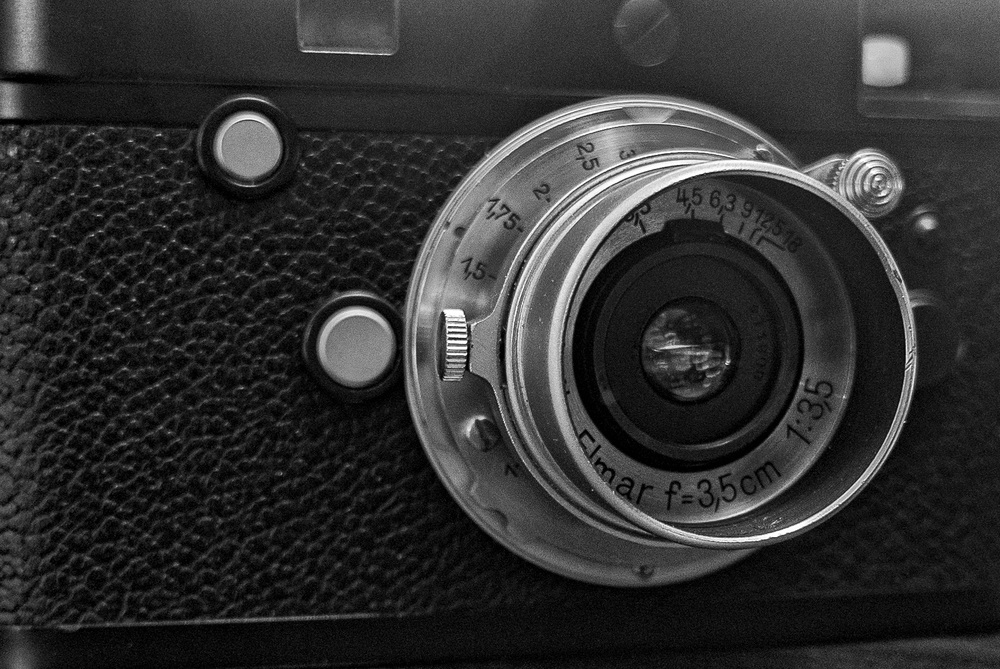
So, what conclusions are to be drawn? I’ve mentioned the operational differences. In handling terms I think I prefer the lens on the Fuji; the M feels a tad too big and heavy for such a popadom of an optic.
And then there’s the problem of the roving index finger (which, in fairness, is probably entirely my fault for not taking more care). William Fagan (see below) makes the good point that a lens hood would stop fingeritis, but it does rather spoil the popadomesque profile of this tiny optic. As it happens, I do have a FISON hood, originally made for the 5cm Elmar and marked as such and fitted it to the 3.5cm on the second day out, entirely without adverse effects—and one benefit, no fingering of the front element.
In favour of the M, the rangefinder makes manual focus on the Elmar much easier than when using the X-Pro2’s electronic or optical viewfinder wizardry. It is simply quicker and more accurate. But then we already know that.
After studying comparative results, though, I think the M has the edge in getting the best image quality out of the Elmar. There is no gainsaying the sheer brawn and dynamic range of that big sensor. Overall, however, the lens seems to feel more at home on the Fuji. The smaller sensor means that it is seeing the central part of the Elmar, which is its best face, and it also allows that, for a given aperture setting, the lens has a wider depth of field. This is helpful for zone focus in street photography, for example. I proved this with some of the shots in the earlier article.
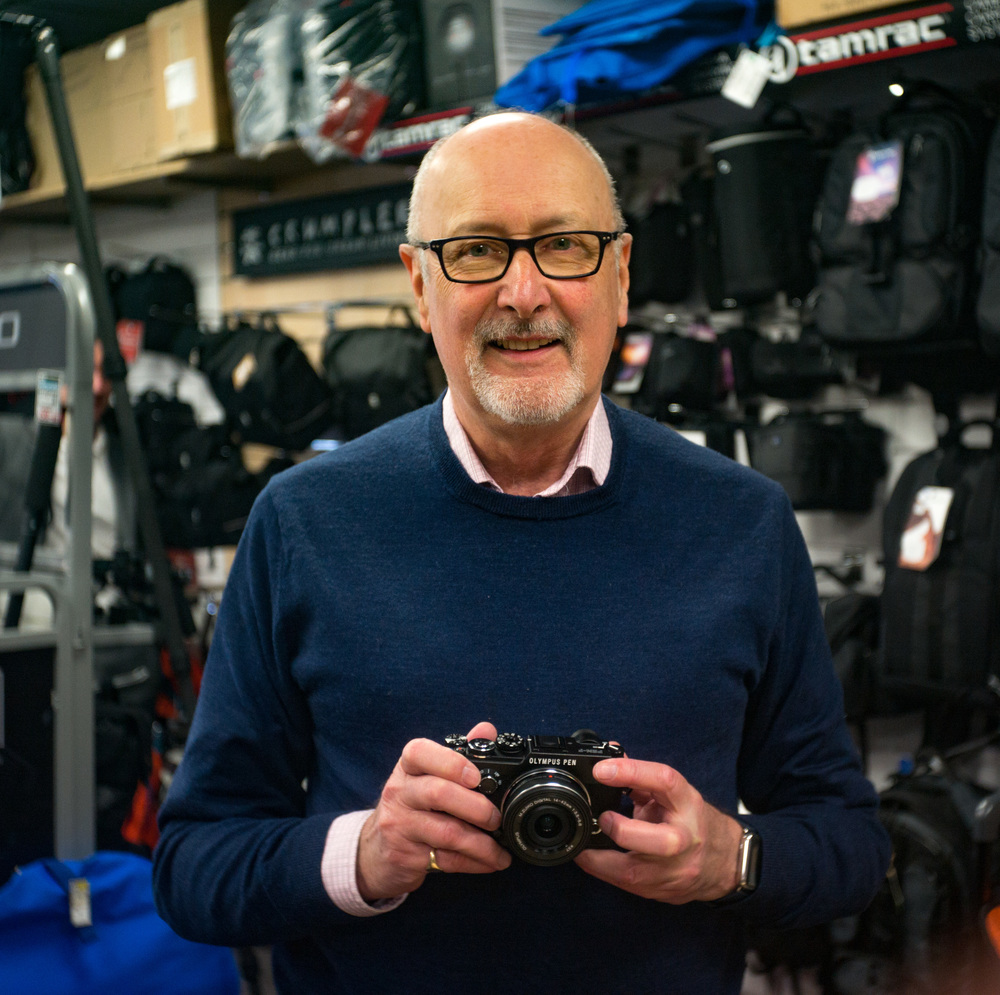
Unfortunately this was perhaps not a test on completely equal terms. There were big weather differences on the three days I tried the Elmar, first on the Fuji and then on two outings with the M. This is apparent in the long-distance river scene crops in the comparison gallery above.
I just feel, on balance, that the Elmar is more at home on the Fuji. That’s really strange and I can’t believe I’m saying it. But that’s just my opinion. It could just mean that an X-Pro2 or a Leica T could be a better home for old glass than a full-frame camera.
Bill Palmer adds a postscript:
It is worth mentioning that the 3.5cm Elmar is, to the best of my knowledge, the smallest-ever interchangeable 35mm full-frame lens. I also have one, paired with a 5cm Nickel Elmar of similar vintage, that I use on my Leica IID. When I had my original GXR with the M-Module I tested it on that, and was very impressed with the results I obtained even then. I absolutely agree that it performs well on APS-C.
William Fagan comes in with a FLQOO:
To keep your finger out of Granny’s way you have to use a FLQOO. A FOOKH might work as well.
The second issue is that the Fujifilm adaptor moves the lens a bit further away from the camera body and makes things a bit easier on the X-Pro 2. Popadom lenses may look attractive but you would need the digital dexterity of a ‘chick sexer’ to make it work. There is such an occupation and what’s more they have vacancies!
Finally, if you really want to use a digital M with a vintage lens, an M8 would be the best bet. I have used vintage lenses very successfully on an M8. The M9 and M240 are a bit less suitable in my experience.
- Subscribe to Macfilos for free updates on articles as they are published. Read more here
- Want to make a comment on this article but having problems? Please read this
______________________
- Both the 3.5cm Elmar and the 35mm Fujinon have a full-frame equivalent focal length of 50mm ↩︎
- Automatic focus magnification is a menu-set option on the M ↩︎

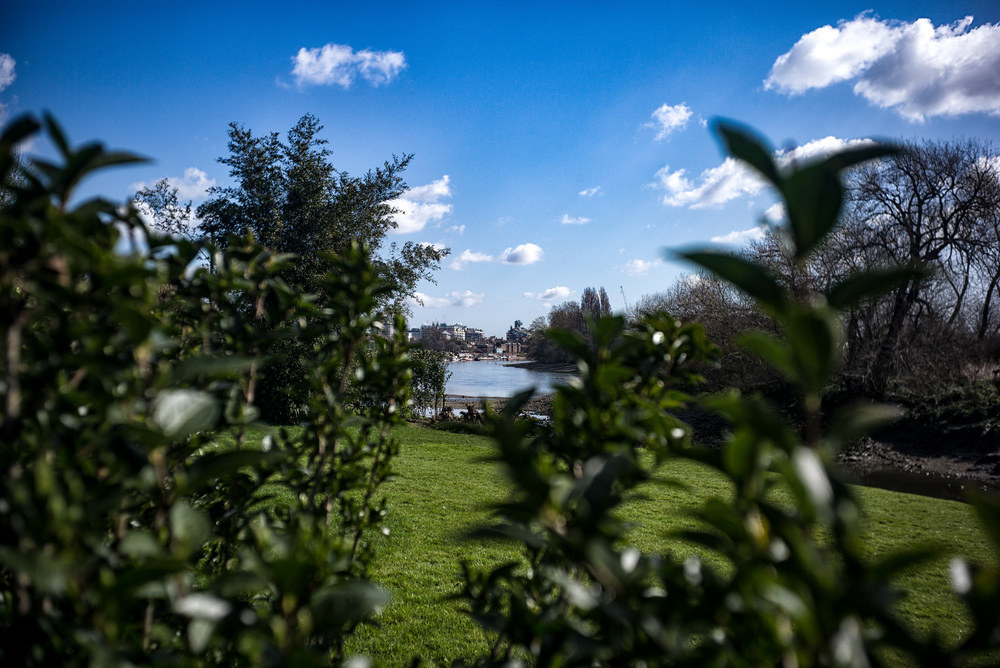
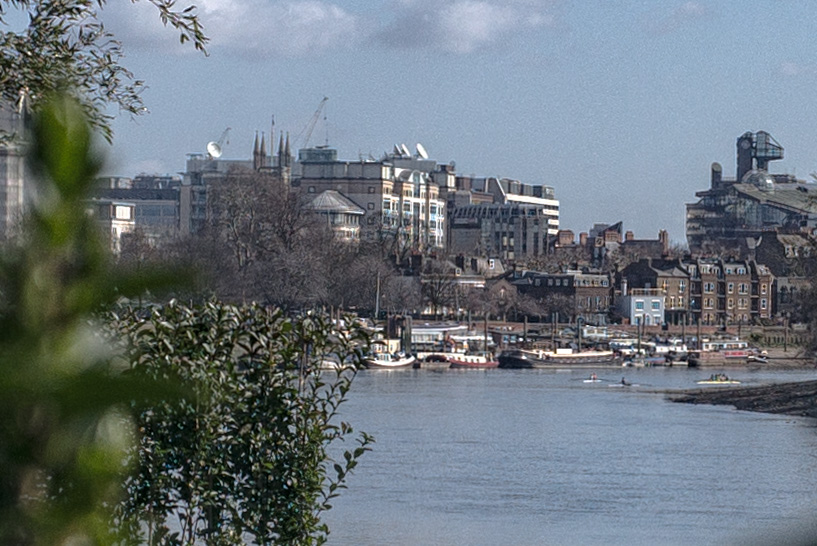

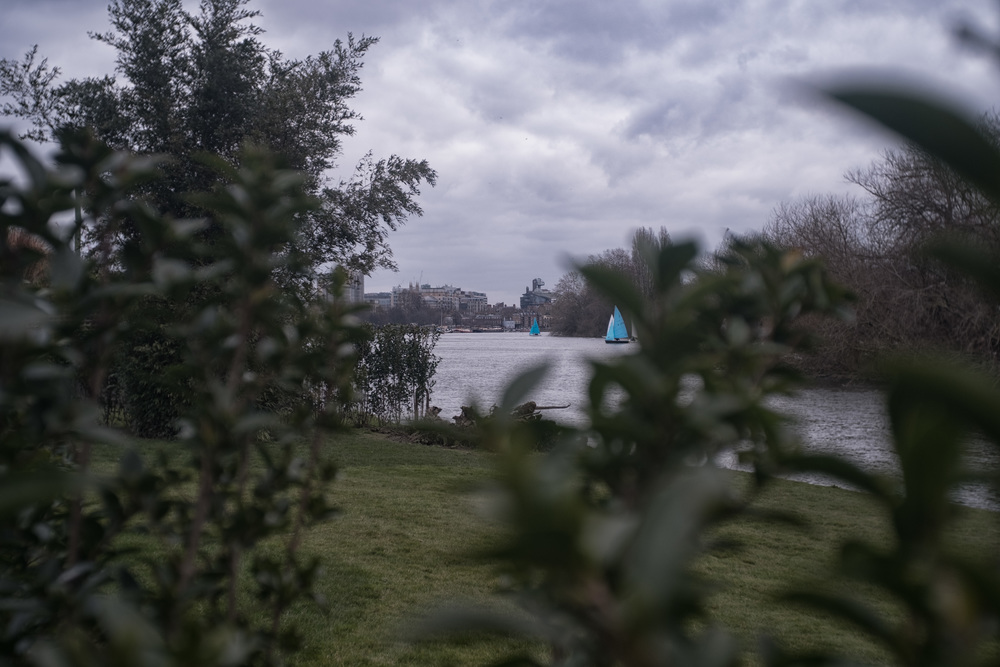
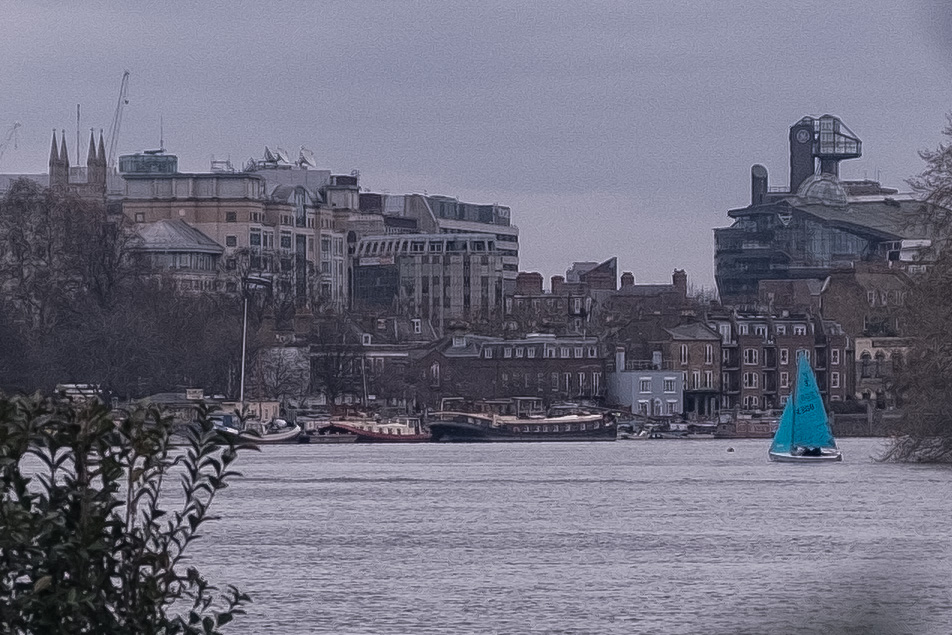
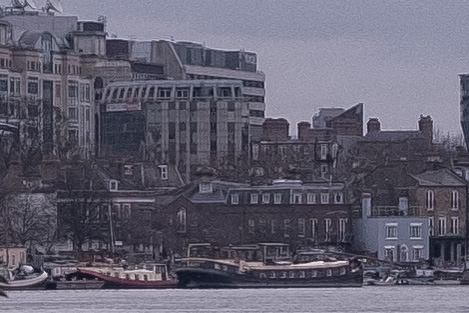
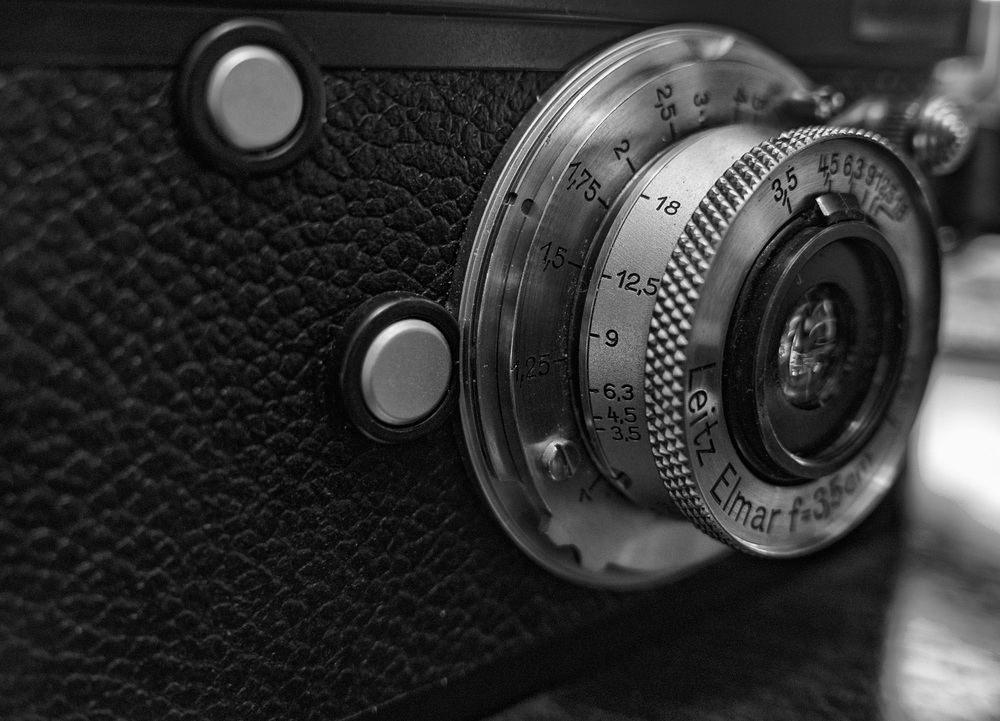
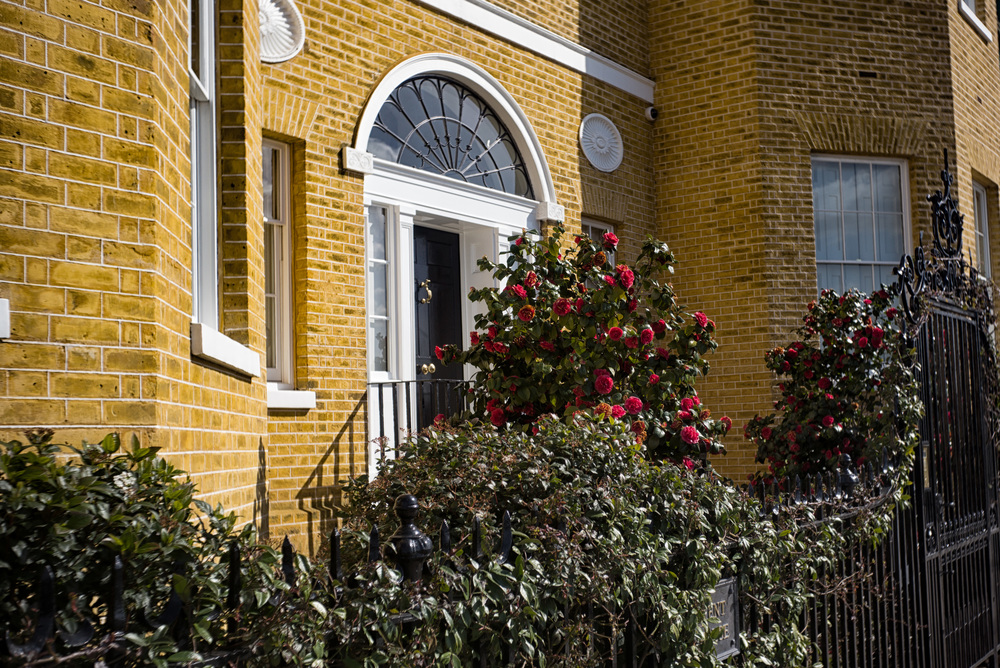
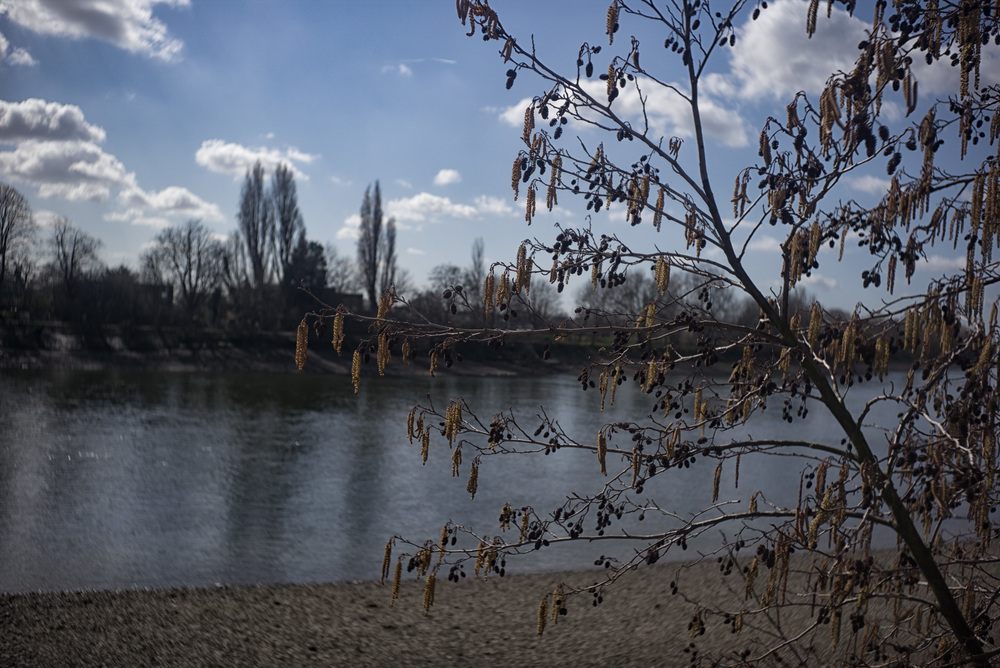
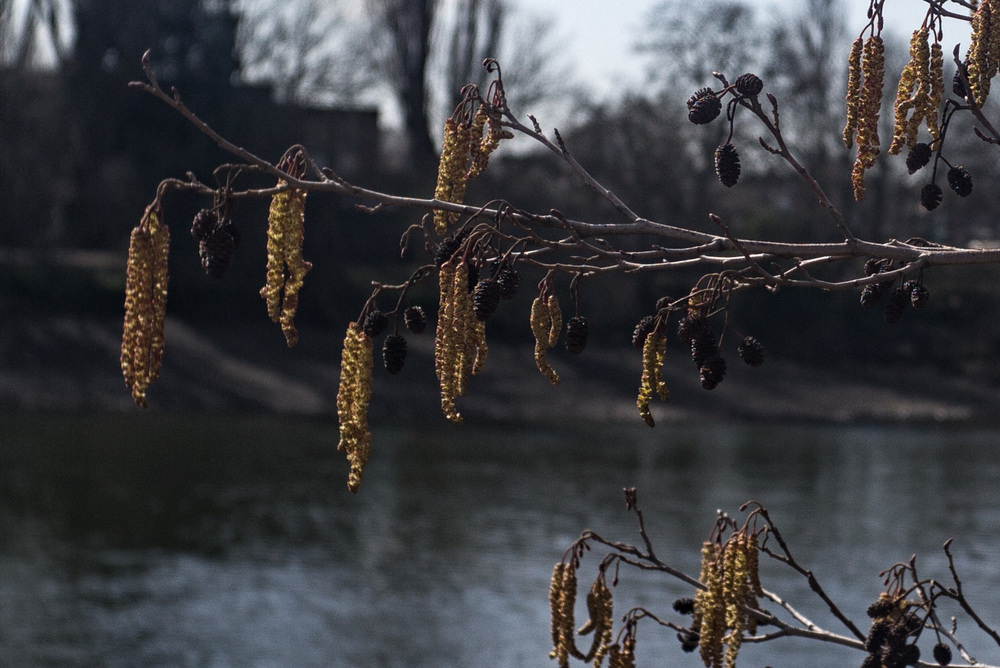
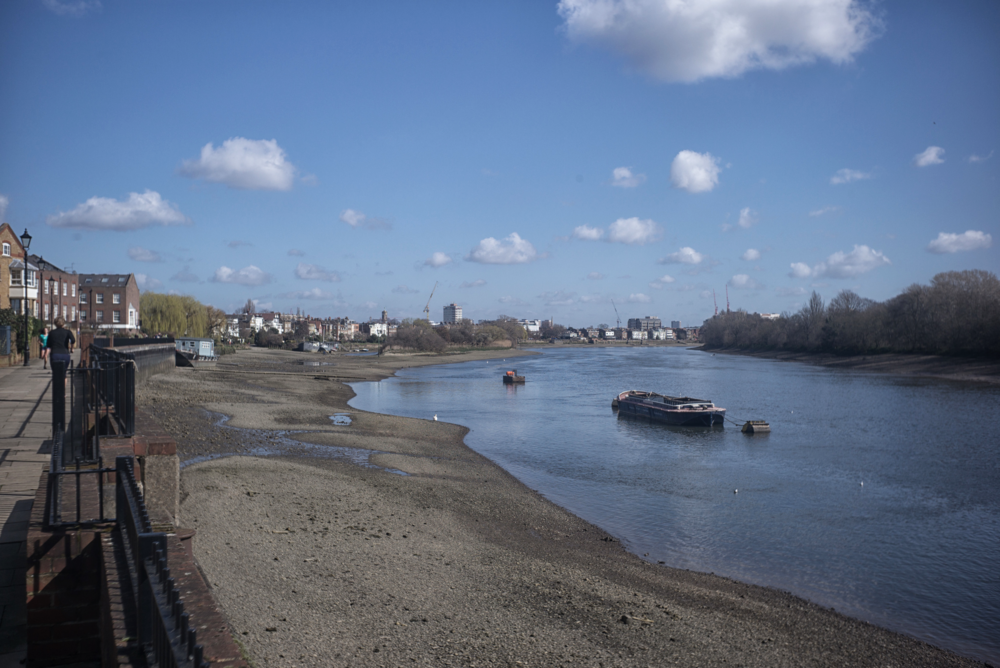
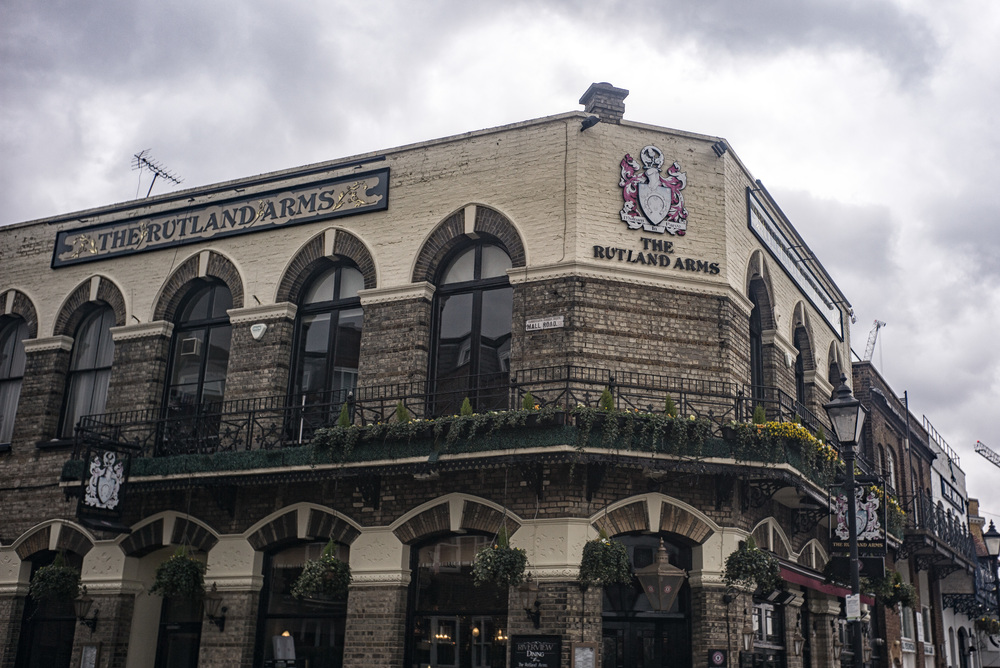
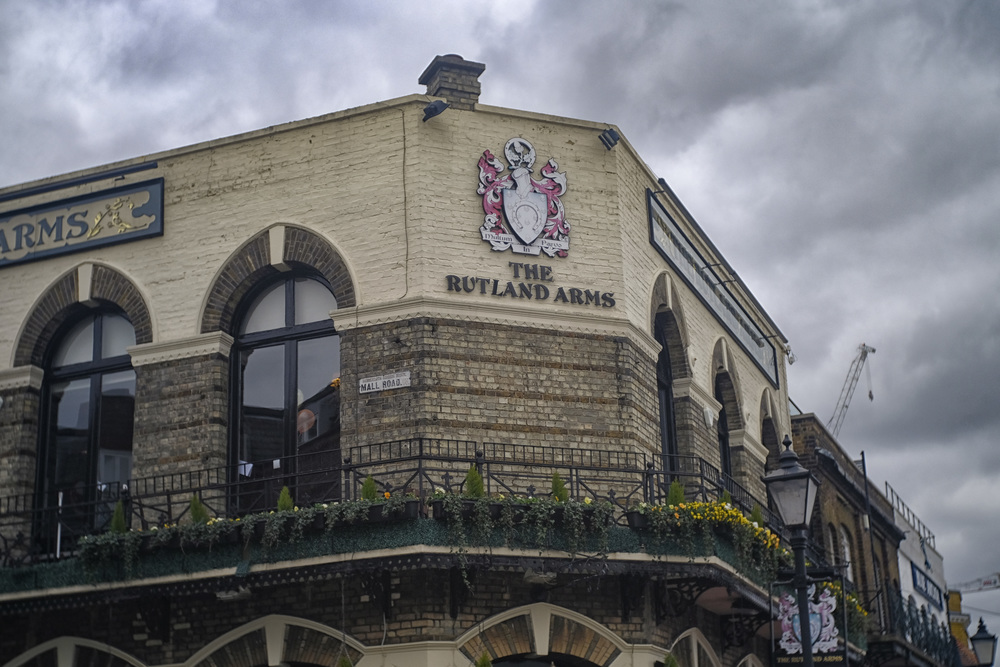
There is a man that makes lenses in Japan that have specifications similar to this… MS Optical?
I wonder if they perform as well as this £250-£350 gem from Leica…?
Somehow, I doubt it.
It is difficult to make a proper comparison between the Fuji and the Leica though (I would have thought), since one is not matching aperture and shutter speed… The Rutland Arms picture seems to be more focused in the M example than the X-Pro, but then perhaps you are using a bigger aperture in the X example, there is a noticeably shallower DOF.
From the examples you give, I would still prefer the M…
I did try to select similar apertures where possible. I left the speed up to the camera. But you are right, it is difficult, especially since I set out last Sunday without a clear idea of what I was aiming for. A bit more planning would have been helpful.